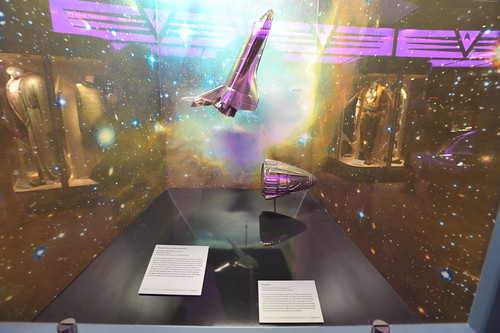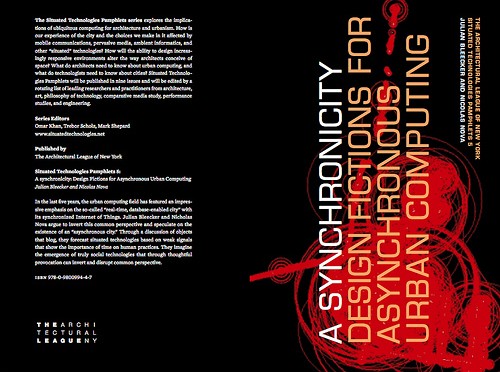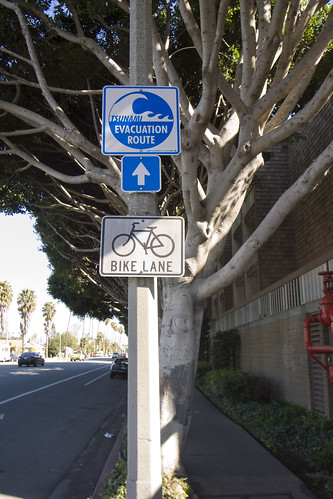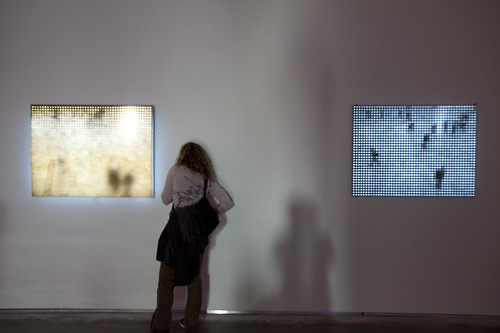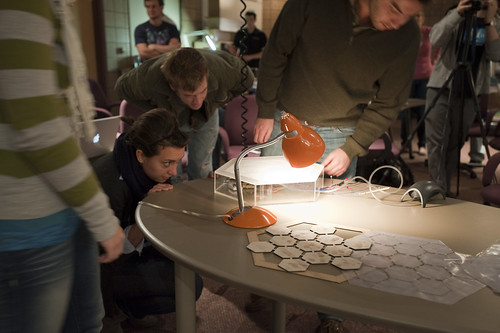
It was working, and it will again. And even in a mode of very temporary failure, the design happens. Here, some students assembly their assemblage for demonstration of their material-semiotic reflection on heliotropic smartsurfaces.
What did I learn from visit to “M” — University of Michigan — and the School of Art & Design, Taubman College of Architecture + Urban Planning? Two things, mostly.
First, huge universities in tiny midwestern towns, with really big footballers really only need one letter to stand in for themselves.
Second, the importance and relevance of props to communicate an idea – a reinforcement of the significance of objects that always contain ideas and possibilities and thereby play a role in the expression of the future. I am perhaps misguidedly and with reckless-abandon reading and practicing both design and actor-network theory..at the same time.
What follows are some scraps and notes, mostly around a combo of two things: design fiction props and the virtues and challenges of design without specification.
After a lecture Thursday night and a bit of a lecture Friday morning, I participated in the Smartsurfaces studio (which also has blog and is run by John Marshall, Karl Daubmann and Max Shtein.
Is there a reluctance to design with partial specifications? Routinely, one can assume that there is development and design first, then there is execution. As if they are distinct “phases” of design work. I understand the tendency — I mean…I’m an engineer. You specify, describe an interface and then just go ahead and build it.
But what about building as specification? Or making to define the specifications and the design principles, and the stories? And doing this over-and-over again, redoing things and refining in the process of making — even making away from the screen?
Normally, one might ask when given a “project”:
What are we going to do?
What are we going to make?
The tenses are all mucked up.
What about instead, when given the chance to project into some near future:
What are we now making?
What are we doing now?
Designing through partial-reflections and partial-knowledge and partial-specifications as a conglomerated design-develop-execute activity — a continuous iterative doing. Brewing and creating controversy in the midst of things — making things not possible, or impossible, or highly speculative, or disagreeable. Or moving with full confidence in the face of overwhelming vagueness and excruciatingly deserted requirements documents.
Perhaps starting from the end — as if the design has been unearthed in the future, by an archeologist who laminates meaning on the thing. Introducing fictional explications with all the seriousness of science-fact making. Creating an object and saying — this is what it is, it is a heliotropic smartsurface and it means these things, and had been used to do such-and-so.
This is the sorts of questions and concerns that make the Smartsurfaces studio so intriguing. I welcomed the opportunity to participate. It is keeping me thinking.
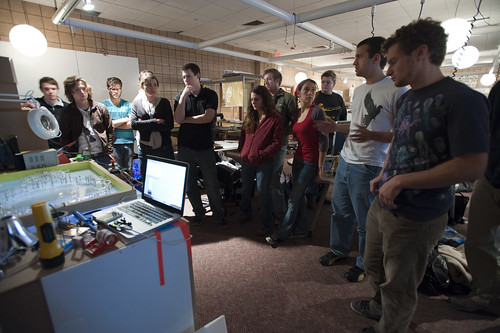
The project description.
Let me describe one of the team’s presentations as a way to explicate some of these ideas.
As described in their presentation, Team 3 had started its heliotropic smartsurface project with an offering by one of the team members of a Hoberman Sphere as a prop to accrete ideas and focus the effort. The team created an articulated 2-D sculpture borrowing mechanical idioms from the initial Hoberman Sphere prop. It was a mechanical, moving object consisting of many connected armatures that collectively formed a giant figure-8 lying flat on a smooth surface that was, I would guess, about 1.5 feet x 2.5 feet. The entire assemblage was articulated by a stepper motor with two bobbins that spooled monofilament. The spools turned via the stepper motor. On the spools and running through a simple network of small bobbins, the monofilament line gathered the armatures in such a way that one or the other side of the figure-8 was pinched closed or pulled open. One spool of monofilament ran to around to one side of the It was described that this could lead to a surface that let sunlight in or blocked it off. The control mechanism was a Macbook connected to an Arduino with a light sensor. The Arduino also controlled the stepper motor. An earlier prototype had been constructed using chipboard as the main component of the armatures. This chipboard prototype was not as durable as the demonstrated version which consisted of clear plastic for the armatures. The spooling posed a problem on occasion and had to be tended-to. It was pointed out that this was one of the main problems with the assemblage. The spools were not reliably gathering the monofilament and keeping it neatly coiled on the bobbins that were attached to the stepper motor. The team had ‘burned out’ a couple of Arduinos along the way to this presentation. They had to borrow a larger stepper motor from one of the studio professors a few hours before the project reviews.

Demonstration. A flashlight creates the effect of the Sun beams on a sensor connected to an Arduino, connected to a Macbook connected to a stepper motor. Sensor readings are interpreted by firmware in the Arduino’s microcontroller. This then sends control signals to the stepper motor and articulates the armatures via spools attached to the stepper motor which run through bobbins on either side of the box the whole thing sits in.
Team 3’s presentation was a very refined, complete, articulate and functionally robust design. It was seductive to watch the mechanism and listen to the quite articulate description of the process. It was a clear, thoughtful bit of work and the detailed construction was impressive.
My remark — and it was only for the productive discussion, and not a dismissive criticism by any means — was to focus on this point about the spooling being finicky, requiring tending during the demonstration. In my own interpretation this was the ‘main problem’ the team faced — a remaining point to ‘work through.’ In fact, it was barely seen as a problem in my eyes. It was an excuse for the presentation, or a begging-of-forgiveness for this distraction of a team member stepping to the assemblage and tugging on some monofilament or fussing with the kit.
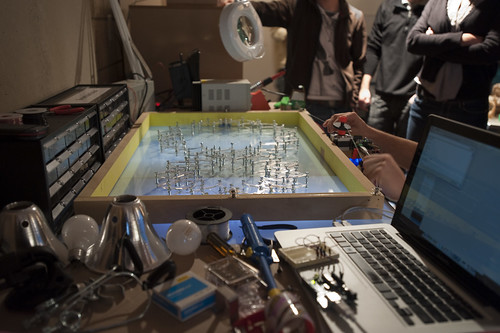
The ‘problem’ as an issue to be addressed is that the spools don’t spool the monofilament consistently. Things get a bit tangled up and the issue is handled with a bit of hand-work to get the assemblage back on its feet.
This is a side-issue in a sense. It’s not even really a problem in the sense that it is something that can be easily figured out. After all, spooling monofilament is a black box at this point — an intermediary of sorts. The ‘problem’ no longer exists — this is something that has been solved, closed off, handled already so it’s just a matter of extracting one of those ‘black boxed’ solutions (e.g. by traveling to the world of sewing machine design, fishing rod reels, ships-anchor-mechanisms, &c.)
The use of a stage prop to frame their design/discussion work of what is being done, or what could be done seemed to move this team from a broad range of possible design-expressions of a ‘heliotropic smartsurface’ into a specific thing whose materialization had a form that could be pointed to — the Hoberman Sphere prop. The prop provided a seed that could crystalize a material goal.
Setting a goal in terms that allows iteration and rethinking and, perhaps most importantly — failing — in the design process open up the possibility of unexpected possibilities. Which is to say the possibility of making things different from what might be expected, or pre-supposed. The tactic comes with maturity and the no-fear sense that, no matter what, things will happen and get ‘done.’
What I might say here is that there could have been more intense failure in the midst of all this. Either failure or iteration. The design ended up as a 2D Hoberman Sphere, just as specified from the beginning.
It is a useful design strategy to not expect/specify a particular, instrumentally functioning, pre-specified thing as the ‘final conclusion’ in the process of designing. When introducing the Hoberman Sphere, I believe this very talented group defined their conclusion with the evidence of this presupposed vision of the designed future being, in my Latour-infested mind, this point that the remaining issues are few, or perhaps even just one point of fixing the spooling issue.
As a tactic for designing new things, my own preference is to allow for the possibility that the thing in the end will become something different along the way, so that where you end up may not be where you thought you would conclude. Each moment in the process evolves into its own refresh and re-invigoration of possibilities. The design is never done. There is no hard distinction between ‘research’, ‘exploration’, ‘design’, ‘development’, ‘execution’ — &c. The Gantt Chart attempts to organize and marshall phases that tick into other phases ultimately reaching a conclusion. It won’t help create new things — there are no gaps, no bumps, the future is determined with no opportunities for explicit failure or remaking or starting-over-again.
Why do I blog this? Some notes to reflect on the challenges of design without stepping through a ladder of design-development-execution. Flattening these hierarchies and combining the action of making/destroying/failing/refining as design itself.
[[Thanks to my hosts, John, Cezanne Charles, Karl, Malcolm McCollough, Amy Catania Kulper, &c. and all the wonderful students in Smartsurfaces.]]
Continue reading Props, Prototypes and Design With No Spec: Notes on Heliotropic Smartsurfaces
